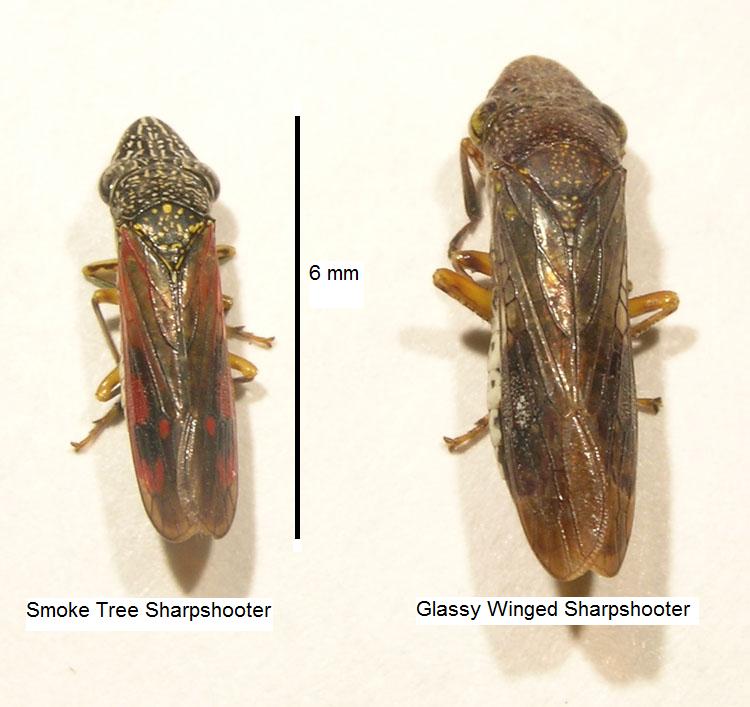 Oleander Leaf Scorch - May 30, 2007 Jeff Schalau, Associate Agent, Agriculture & Natural Resources, Arizona Cooperative Extension, Yavapai County Oleander leaf scorch (OLS) is relatively new disease to Arizona and has been in the news lately. I have also received a few questions regarding its presence in the Verde Valley. In general, I donít expect to see OLS in the Verde Valley at this time, but it could show up in the future. There is no way to know if it is here or not unless someone finds it, reports it, and the infected tissue is assayed by a lab. So, in this column, I will describe the disease, and readers can observe their oleanders over the coming years. Oleander (Nerium oleander) is a medium to large evergreen, flowering shrub that performs best in area shaving winter temperatures above 25 degrees F. OLS is caused by the oleander strain of Xylella fastidiosa, a bacterium that colonizes the xylem (water conducting) tissue of oleander. There are many different strains of X. fastidiosa that infect many different plant species. The oleander strain is deadly in oleander but does not infect grape (the grape strain causes Pierceís disease of grape and does not infect oleander). Symptoms of OLS on oleander include an initial yellowing of leaves that is soon followed by the characteristic browning and necrosis (dead tissue) of the tips and edges of leaves. Symptoms often appear on one branch or part of the plant in the summer. Although the symptoms are often similar to drought stress and salt damage, infected plants continue to decline. Winter freeze damage and/or poor irrigation may also resemble OLS. However, OLS symptoms should appear and develop during the growing season. The OLS strain of X. fastidiosa is transmitted to oleanders by xylem feeding sharpshooter insects. Presently, the most important vector of X. fastidiosa in oleander in Arizona is the smoke tree sharpshooter which is common in low desert areas, including Phoenix and Tucson. Another important vector, the glassy-winged sharpshooter, has not become established in Arizona. Although it has been reported in an isolated area of Sierra Vista, detection and eradication efforts by the Arizona Department of Agriculture continue to be effective. Both the glassy-winged sharpshooter and the smoke tree sharpshooter are much larger than other sharpshooters. Figure 1 shows the smoke tree sharpshooter and the glassy winged sharpshooter. They measure up to ľ inch long (> 6 mm) and are easily visible but move quickly on leaves and stems. To date, X. fastidiosa has not been detected in the roots of oleander and there is no data from controlled experiments showing that it is transmitted by pruning tools.  Figure 1. Comparison of the smoke tree sharpshooter and the glassy winged sharpshooter. There is no known control for OLS. Antibiotics such as tetracycline may have some very short term benefit but are not an effective control. Reduction of the insect vectors may be effective in a large scale effort, but this is difficult or impossible in private landscape settings. Infected plants should be removed as soon as possible to reduce spread of the bacterium to new plants. Preliminary observations of an infected oleander hedge in Tucson indicate that infected plants cut close to the ground produce healthy new growth. In this location, where populations of sharpshooters are probably low and infected plant tissue is removed, new growth may remain healthy for some time. However, in areas with heavy infestations of X. fastidiosa and sharpshooter vectors, pruning away infected branches or cutting plants back entirely do not stop spread of the bacterium or disease development. For photos of OLS and more information, the following two publications are available on-line: www.ag.arizona.edu/PLP/plpext/diseases/trees/oleander/oleleaf.htm and www.ipm.ucdavis.edu/PMG/PESTNOTES/pn7480.html. The University of Arizona Cooperative Extension can assist you with diagnosis of OLS. It is recommended that you rule out other contributing factors before calling our offices. Make sure the oleander plants are adequately irrigated with water low to moderate in salt content. Monitor them throughout the growing season. Master Gardeners will record your name, address, and other contact information and ask you to monitor the plants for symptoms. If you have other gardening questions, call the Master Gardener line in the Cottonwood office at 646-9113 ext. 14 or E-mail us at cottonwoodmg@yahoo.com and be sure to include your address and phone number. Find past Backyard Gardener columns or submit column ideas at the Backyard Gardener web site: http://cals.arizona.edu/yavapai/anr/hort/byg/. |